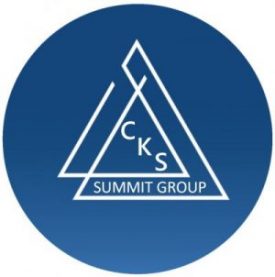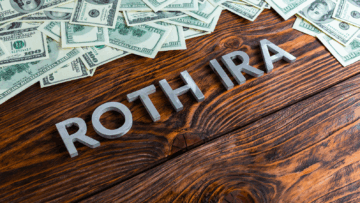Saving for retirement is one of the most crucial financial goals you’ll ever have. If you’re not correctly maximizing your retirement accounts, you could be leaving valuable money on the table.
With life expectancy increasing and the cost of living on the rise, ensuring that you have enough saved for your golden years is more important than ever.
Two of the most effective tools for retirement savings in the United States are the 401(k) and the Individual Retirement Account (IRA). In this blog, we’ll dive deep into these retirement vehicles, explore how you can maximize your contributions, and help ensure you’re on track for a financially secure retirement.
Understanding 401(k) Plans
A 401(k) is a retirement savings plan sponsored by an employer that allows employees to save and invest a portion of their paycheck before taxes are taken out. These funds are invested in a variety of assets, typically mutual funds, and grow tax-deferred until withdrawal during retirement.
There are two main types of 401(k) plans: Traditional and Roth. In a Traditional 401(k), contributions are made with pre-tax dollars, reducing your taxable income for the year. However, withdrawals during retirement are taxed as ordinary income. On the other hand, a Roth 401(k) involves contributions made with after-tax dollars, but qualified withdrawals during retirement are tax-free.
For 2024, the IRS has set the contribution limit for 401(k) plans at $22,500. If you’re over the age of 50, you can make an additional catch-up contribution of $7,500, bringing your total possible contribution to $30,000. These limits are periodically adjusted for inflation, so it’s essential to stay informed about any changes.
Understanding IRAs
An Individual Retirement Account (IRA) is a type of investment account that offers tax advantages for retirement savings. There are two primary types of IRAs: Traditional and Roth. A Traditional IRA allows you to make pre-tax contributions, reducing your taxable income, while a Roth IRA involves after-tax contributions, offering tax-free withdrawals during retirement.
In 2024, the contribution limit for IRAs is $7,000 per year for those under 50, and $8,000 for those 50 and older, thanks to the $1,000 catch-up contribution. Similar to 401(k) limits, these figures are adjusted periodically to account for inflation.
IRAs typically come with tax advantages, but they depend on the type you choose. Traditional IRAs offer immediate tax benefits since contributions are tax-deductible. However, you’ll pay taxes on withdrawals in retirement. Roth IRAs don’t provide an upfront tax deduction, but the withdrawals, including earnings, are tax-free if certain conditions are met.
It’s important to note that withdrawing funds from your IRA before age 59½ typically incurs a 10% early withdrawal penalty in addition to regular income taxes. There are exceptions, such as for first-time home purchases or certain medical expenses, but it’s generally best to leave your IRA funds untouched until retirement.
Tips for Maximizing Your 401(k) and IRA Accounts
- Take Advantage of Employer Matching: One of the most effective ways to maximize your 401(k) is to take full advantage of any employer-matching contributions. Employers typically match a percentage of your contributions up to a certain limit. For instance, if your employer matches 50% of your contributions up to 6% of your salary, you should aim to contribute at least 6% to capture the full match. Failing to do so is essentially leaving free money on the table.
- Increase Contributions Gradually: If maximizing contributions seems daunting, consider increasing your contributions gradually. Start by contributing enough to receive the full employer match, then aim to increase your contributions by 1% annually or with each salary increase. This incremental approach can help you adjust to living on a slightly smaller paycheck while steadily boosting your retirement savings.
- Consider Maxing Out Your IRA Contributions: In addition to your 401(k), maximizing contributions to an IRA is another effective way to boost your retirement savings. As of 2024, the contribution limit for IRAs is $7,000, with an additional $1,000 catch-up contribution allowed for those aged 50 and older. Whether you choose a Traditional or Roth IRA, maxing out your contributions can provide valuable tax benefits and help contribute to a more secure retirement.
- Consider the Roth Option: For those who anticipate being in a higher tax bracket during retirement, contributing to a Roth 401(k) or Roth IRA might be a wise decision. Roth accounts are funded with after-tax dollars, meaning you won’t receive an immediate tax deduction, but qualified withdrawals during retirement are tax-free. This can be particularly beneficial if you expect taxes to rise in the future or if you believe you’ll be in a higher income bracket in retirement.
- Utilize Catch-Up Contributions: If you’re aged 50 or older, you can take advantage of catch-up contributions, which allow you to contribute additional amounts to your retirement accounts. For 401(k)s, the catch-up contribution limit is $7,500, and for IRAs, it’s $1,000. These additional contributions can significantly boost your retirement savings, especially if you started saving later in life. A study by the Center for Retirement Research found that individuals who take advantage of catch-up contributions increase their retirement savings by an average of 10-15% over the last decade before retirement.
- Automate Your Savings: Automating your retirement contributions helps ensure that you consistently save for retirement without the temptation to skip contributions. By setting up automatic transfers from your paycheck or bank account to your 401(k) or IRA, you make saving a priority and take advantage of dollar-cost averaging, which can help mitigate market volatility over time. According to a 2023 survey by T. Rowe Price, individuals who automate their retirement savings contribute 30% more on average than those who manually contribute to their accounts.
- Regularly Review and Adjust Your Investments: Maximizing your contributions is only part of the equation; how you invest those contributions is equally important. Regularly review your investment portfolio to help ensure it aligns with your retirement goals, risk tolerance, and time horizon. Consider diversifying your investments across different asset classes to reduce help risk and potentially increase returns.
Balancing 401(k) and IRA Contributions
Deciding whether to prioritize contributions to a 401(k) or an IRA depends on various factors, including employer matching, tax benefits, and your overall financial situation. Generally, it’s wise to contribute enough to your 401(k) to maximize employer matching before focusing on IRA contributions.
Diversifying your retirement accounts by contributing to both a 401(k) and an IRA can offer a balanced approach to tax management. This strategy allows you to benefit from both tax-deferred and tax-free growth, potentially reducing your tax burden in retirement.
By leveraging both your 401(k) and IRA, you can create a more robust retirement plan. This approach allows you to maximize your contributions, take advantage of different tax treatments, and help increase your overall retirement savings.
How CKS Summit Group Can Help
Maximizing your 401(k) and IRA contributions is a crucial step toward helping secure a financially stable retirement, but navigating the complexities of retirement planning can be overwhelming. This is where CKS Summit Group can make a significant difference. With years of experience and a deep understanding of retirement planning strategies, CKS Summit Group offers personalized guidance to help you make the most of your retirement savings. Our services include:
- Tailored Retirement Strategies: At CKS Summit Group, we recognize that every individual’s financial situation is unique. Our team of dedicated advisors works closely with you to develop a customized retirement strategy that aligns with your goals, risk tolerance, and time horizon. Whether you’re just starting to contribute to your 401(k) or IRA, or you’re nearing retirement and need to optimize your savings, we provide actionable advice to help you maximize your contributions and grow your wealth.
- Personalized Financial Planning: Beyond just retirement accounts, CKS Summit Group offers financial planning services that consider all aspects of your financial life. We help you integrate your 401(k) and IRA contributions with other investment strategies, tax planning, and estate planning to help ensure a holistic approach to your retirement readiness.
- Ongoing Support and Adjustments: The financial landscape is constantly changing, and so are your personal circumstances. That’s why CKS Summit Group offers ongoing support and regular reviews of your retirement plan. We monitor market trends, changes in tax laws, and shifts in your financial situation to make necessary adjustments to your strategy. This proactive approach helps ensure that your retirement plan remains on track, no matter what changes life throws your way.
- Educational Resources and Empowerment: We believe in empowering our clients through education. At CKS Summit Group, we provide access to a wealth of educational resources, from webinars to one-on-one consultations. Our goal is to help you understand the nuances of retirement planning so you can make informed decisions with confidence. By staying informed and involved in your financial planning, you’ll be better equipped to achieve your retirement goals.
A Trusted Partner in Your Retirement Journey
Choosing the right financial partner is crucial for your retirement success. CKS Summit Group prides itself on building long-term relationships with our clients based on trust, transparency, and a commitment to your financial well-being. We’re here to guide you through every stage of your retirement journey, from maximizing your contributions to making strategic withdrawals during retirement.
Contact us today to schedule a complimentary consultation.
Final Thoughts
Maximizing your 401(k) and IRA contributions is a powerful strategy for helping secure a comfortable retirement. By taking advantage of employer matching, gradually increasing your contributions, and considering options like Roth accounts and catch-up contributions, you can significantly help enhance your retirement savings. With diligent planning and regular reviews, you’ll be well on your way to achieving your retirement goals.
Remember, the earlier you start and the more consistent you are with your contributions, the better positioned you’ll be for a financially secure retirement. If you’re unsure about the best strategies for your situation, consider consulting a financial advisor who can help you navigate the complexities of retirement planning.
By focusing on these key strategies and staying informed about recent trends and statistics, you can confidently navigate the path to retirement and make the most of your 401(k) and IRA contributions.
FAQs
What happens if I exceed the contribution limit?
If you exceed the contribution limit for your 401(k) or IRA, you may be subject to penalties. It’s important to track your contributions carefully to avoid exceeding the limit.
Can I contribute to both a 401(k) and an IRA?
Yes, you can contribute to both a 401(k) and an IRA. Doing so can sometimes offer additional tax benefits and help you diversify your retirement savings.
What is the difference between a Traditional and a Roth IRA?
The primary difference between a Traditional and a Roth IRA is the tax treatment. Traditional IRAs offer tax-deductible contributions with taxed withdrawals, while Roth IRAs offer tax-free withdrawals with contributions made after tax.
How can I maximize employer matching contributions?
To help maximize employer matching contributions, contribute at least the amount required to receive the full match. This is often a percentage of your salary, such as 3% or 6%.
When should I start making catch-up contributions?
You can start making catch-up contributions once you turn 50. It’s a good idea to begin these contributions as soon as you’re eligible to help maximize your retirement savings.



